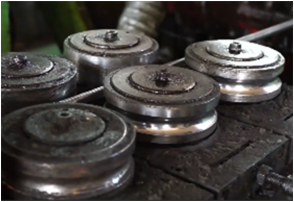11월 . 24, 2024 22:06 Back to list
beam clamp for grounding
Understanding Beam Clamps for Grounding A Comprehensive Guide
In the realm of electrical engineering and construction, safety and reliability are paramount. One essential component that plays a critical role in ensuring safety is the grounding system, which protects both people and equipment by creating a low-resistance path for electrical faults. Among the various tools used in grounding systems, beam clamps stand out due to their ease of use, versatility, and effectiveness in establishing a solid electrical connection to structural elements.
What is a Beam Clamp?
A beam clamp is a mechanical fastening device typically made of durable materials like steel or aluminum. It is designed to secure grounding conductors to structural beams. Its unique design allows for a reliable and robust attachment without compromising the integrity of the beam itself. Typically employed in industrial and commercial settings, beam clamps are essential for grounding applications where a direct connection to metal structures is necessary.
Importance of Grounding
Grounding serves several critical functions in electrical systems. It helps to prevent electrical shock, protects equipment from lightning strikes and surges, and reduces the risk of fire caused by electrical faults. For these reasons, effective grounding systems are a requirement across various industries, including telecommunications, transportation, manufacturing, and construction.
How Beam Clamps Work
Beam clamps facilitate the attachment of grounding wires to structural beams. They come in different sizes and designs to accommodate various beam types and electrical needs. Once installed, the clamp securely grips the beam, providing a strong mechanical bond that ensures a low-resistance path for fault current. This path is necessary for protective devices, such as circuit breakers or fuses, to function effectively during fault conditions.
Most beam clamps are designed to be weather-resistant and can withstand harsh environmental conditions, making them suitable for both indoor and outdoor applications. This durability is essential for maintaining the integrity of grounding systems in challenging environments.
Installation of Beam Clamps
beam clamp for grounding

Installing beam clamps is a straightforward process. Normally, it involves the following steps
2. Preparation Ensure the area is clear and safe for installation. Gather necessary tools, typically including a wrench and a screwdriver.
3. Attachment Place the beam clamp over the beam and tighten it according to the manufacturer’s specifications. It should fit snugly without damaging the beam.
4. Grounding Connection Connect the grounding conductor to the beam clamp using appropriate methods, such as bolt connections or pressure fittings.
5. Testing Finally, test the grounding connection to ensure it meets safety standards and provides a low-resistance path.
Choosing the Right Beam Clamp
When selecting a beam clamp, consider factors such as material strength, compatibility with your grounding system, and environmental conditions. It's also crucial to comply with local electrical codes and guidelines to ensure safety and effectiveness.
Conclusion
In summary, beam clamps are vital components in creating effective grounding systems. Their ease of installation, durability, and reliability make them indispensable for ensuring electrical safety across various settings. Understanding how to select and install these clamps will prepare professionals to maintain safe and compliant electrical systems, ultimately protecting lives and property from electrical hazards. As technology continues to advance, staying informed about the best practices for grounding systems will remain crucial for engineers and safety personnel alike.
-
Threaded Rods in Art Where Structural Integrity Meets Aesthetic Vision
NewsApr.11,2025
-
Optimize Industrial Fastening with Precision-Crafted Hex Nut Solutions
NewsApr.11,2025
-
Master Fastening with Premium Stainless Steel Carriage Bolts
NewsApr.11,2025
-
Hex Sleeve Anchors: Smart Choice for Industrial-Grade Concrete Fastening
NewsApr.11,2025
-
Hex Head Timber Screws: Reinventing Safety in Modern Livestock Enclosures
NewsApr.11,2025
-
Elevate Efficiency with Robust Beam Clamps
NewsApr.11,2025


